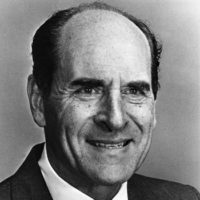
Henry J. Heimlich
Xavier University
For developing the Heimlich Maneuver, a simple and practical technique for the prevention of death from choking which has saved thousands of lives.
Throughout the world, over 100,000 people choke to death each year when food or other foreign objects accidentally lodge in the windpipe. Unless breathing is restored within four minutes, irreversible brain damage begins and death is an imminent threat. Because the victim cannot speak, the problem may not be recognized or may be mistaken for a heart attack.
The Heimlich Maneuver is a practical, cost-free solution to this life-threatening emergency, requiring neither great strength, special equipment nor elaborate training. In 1972, Dr. Heimlich began to investigate the mechanism of accidental death by choking. He learned that for physical reasons, hitting a choking victim on the back or attempting to remove the object with the fingers usually wedged it more firmly in the windpipe. Even when a person's airway is completely blocked, an appreciable amount of air remains in the lungs.
Research on animals convinced Dr. Heimlich that the object could be forced out by mobilizing this residual air. In 1974, Dr. Heimlich proposed in the Journal of Emergency Medicine that any person could suddenly compress this air in the victim's lungs by delivering a quick, upward thrust to the diaphragm, expelling the object from the airway. Within months after the publication of this article, dozens of choking episodes were reported in which the victims' lives were saved by this method. It is employed today by first aid personnel, emergency medical technicians, medical professionals and the lay public in a variety of emergencies.
To Dr. Heimlich, for his achievements in the life-saving development of the Heimlich Maneuver, a simple and practical technique for the prevention of deaths from choking, this 1984 Albert Lasker Public Service Award is given.
